Dec 03, 2013
Page Snow, the chief philanthropic officer of Foundation Source named the END Fund one of the five best philanthropic organizations working in Africa, in a post on Barron’s Penta Daily.
Join us and invest in the END Fund.
By: Richard C. Morais
Here is a list of five philanthropic organizations successfully making inroads in Africa –and why. But, before we start, be aware that “effective” philanthropy is usually defined as having achieved “results.” That’s fine, but “effective” is not the same thing as “worthy.” If you’re going to use hard evidence of results as your only yardstick for measuring philanthropic success, charities with more intangible but nevertheless still important goals will probably not make the cut.
The African Medical and Research Foundation (AMREF) operates, for example, in seven different African nations; its multi-pronged approach tackles everything from maternal health to medical research. The charity is pursuing worthy causes, in other words, but given its vast reach and scope, results are hard to measure. So don’t overlook some of the many “worthy” charities out there that don’t have the cold metrics to document all their results.
That caveat aside, here are five effective Africa-focused charities that smartly get the job done. They’ve been hand-picked by Page Snow, the chief philanthropic officer of Foundation Source, a Connecticut-based philanthropic advisor and partner to 1,110 private foundations across the country. (To learn more about Foundation Source, check out Penta’s article, “Help for Philanthropists.”)
The END Fund fights neglected tropical diseases (NTDs), a group of parasitic and bacterial infectious diseases that thrive in conditions of rural poverty, where children and adults do not have access to clean water and basic sanitation. The END Fund tackles the five most prevalent NTDs: intestinal worms, schistosomiasis, lymphatic filariasis, trachoma, and river blindness – all of which can be treated by relatively inexpensive medicines donated by pharmaceutical companies and distributed by national administration programs.
Why it works: NTDs have devastating consequences but it’s surprisingly inexpensive to curtail their damaging effects. The END Fund strategy relies on proven therapies that often cost less than 50 cents per person per year.
African Leadership Academy hopes to foster lasting peace and prosperity in Africa by developing and connecting the continent’s future leaders. Working with a variety of organizations from across the continent –government ministries, NGOs, charities and multi-national corporations— ALA seeks out daring young leaders and offers them not only two years of training, but a lifetime of guidance. Although the inaugural class entered ALA only in 2008, and will start graduating from universities in the spring, the program has already produced promising entrepreneurs, writers, and educators. ALA has launched 38 non-profit and for-profit enterprises since inception, and so far many of these enterprises continue to thrive on campus and in students’ home countries.
Why it works: The popular program (4,000 applicants for 100 annual slots) strikes at the root causes of Africa’s most intractable problems, by cultivating entrepreneurs who can create jobs, scientists who can sustain food production and improve healthcare, and responsible leaders who can build society and help avert warfare.
Miraclefeet uses the inexpensive, nonsurgical “Ponseti method” to treat children living with clubfoot in developing countries. Treatment costs $250 per child.
Why it works: The organization partners with local doctors to provide a low-cost and 95% effective treatment.
This top-rated charity on Givewell.org supplies insecticide-treated bed nets to prevent malaria, a major problem in sub-Saharan Africa. Over 1 million people–mostly children—die each year from malaria. Insecticide-treated bed nets prevent deaths and many other non-fatal cases of malaria and cost on average $3 a net.
Why it works: The organization provides a proven, low-cost solution that is also inexpensive to distribute and simple to implement. No one needs to be trained on how to use a bed net.
While this charity is counter intuitive, given that Penta’s cover story is about the corrosive nature of Western aid to Africa, this organization works precisely because it doesn’t patronize Africans or insist it knows what’s best for locals. GiveDirectly simply distributes cash to the very poor in Kenya, without restrictions on how that cash should be used. That’s all they do. Although donors might be concerned the cash might not be spent wisely, or even used to buy drugs and alcohol, GiveDirectly was able to document that recipients spent the funds on necessities such as food, home improvements like fixing a leaky roof, livestock, and other necessities. This is a top-rated charity on Givewell.org.
Why it works: There’s no waste (shipping, using a middleman for supplies, etc.) when you give cash. And as GiveWell.org explains, “Strong evidence indicates that cash transfers lead recipients to spend more on their basic needs (such as food).” Sometimes, it also allows recipients to start their own businesses or make investments in their existing businesses, resulting in “very high returns, with no evidence of large increases in spending on items like alcohol or tobacco.” Plus, if the money is spent locally, it’s possible that these cash transfers have the added effect of stimulating the local economy.
Original post: http://blogs.barrons.com/penta/2013/11/30/african-philanthropy-five-of-the-best/

